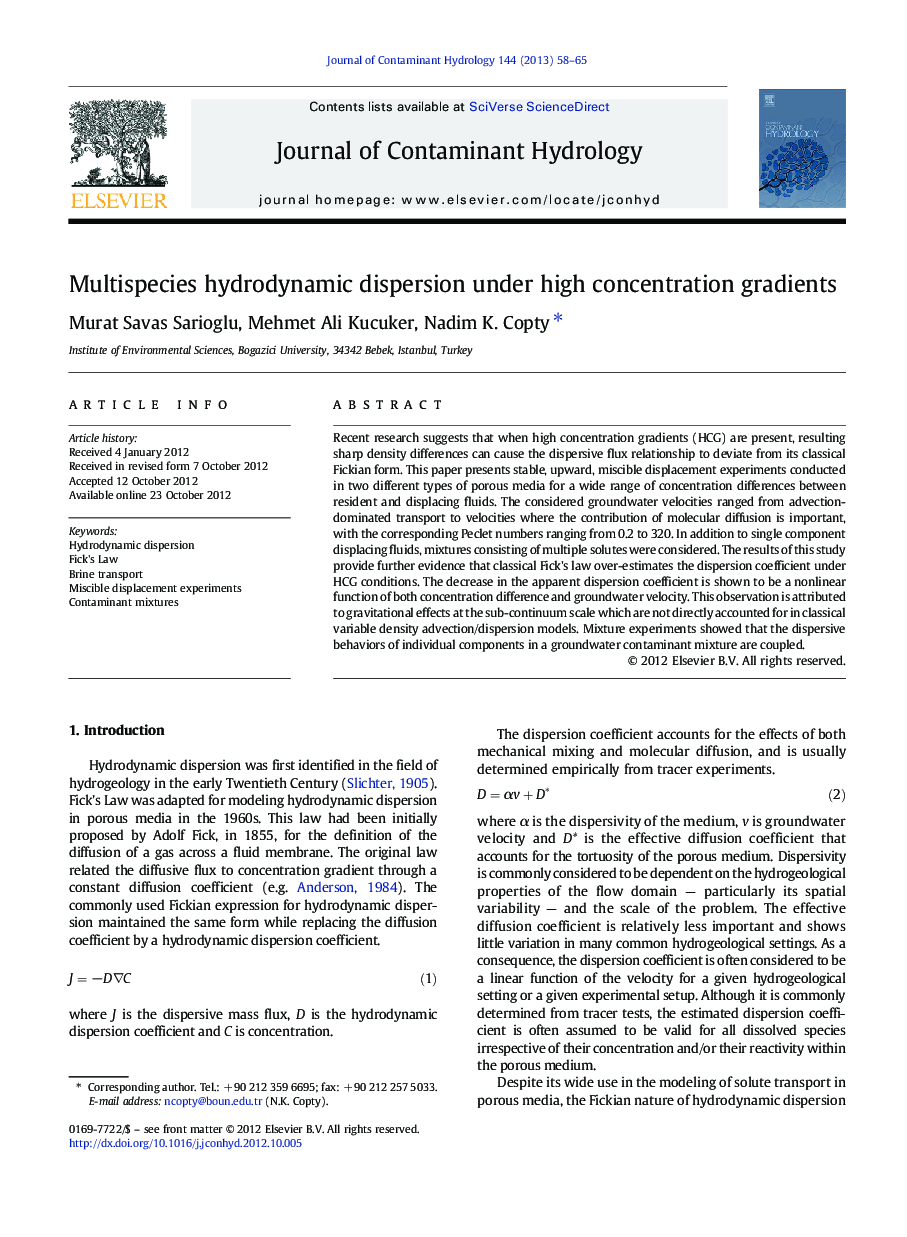| Article ID | Journal | Published Year | Pages | File Type |
|---|---|---|---|---|
| 4546720 | Journal of Contaminant Hydrology | 2013 | 8 Pages |
Recent research suggests that when high concentration gradients (HCG) are present, resulting sharp density differences can cause the dispersive flux relationship to deviate from its classical Fickian form. This paper presents stable, upward, miscible displacement experiments conducted in two different types of porous media for a wide range of concentration differences between resident and displacing fluids. The considered groundwater velocities ranged from advection-dominated transport to velocities where the contribution of molecular diffusion is important, with the corresponding Peclet numbers ranging from 0.2 to 320. In addition to single component displacing fluids, mixtures consisting of multiple solutes were considered. The results of this study provide further evidence that classical Fick's law over-estimates the dispersion coefficient under HCG conditions. The decrease in the apparent dispersion coefficient is shown to be a nonlinear function of both concentration difference and groundwater velocity. This observation is attributed to gravitational effects at the sub-continuum scale which are not directly accounted for in classical variable density advection/dispersion models. Mixture experiments showed that the dispersive behaviors of individual components in a groundwater contaminant mixture are coupled.
► Transport is non-Fickian when high concentration gradients (HCG) exist ► Dispersion decreases as concentration difference increases and as velocity decreases ► HCG Dispersion cannot be modeled using a Fickian density-dependent model ► When HCG exist, dispersive flux of individual solute components are inter-dependent ► Non-Fickian transport is attributed to pore-scale gravitational effects
